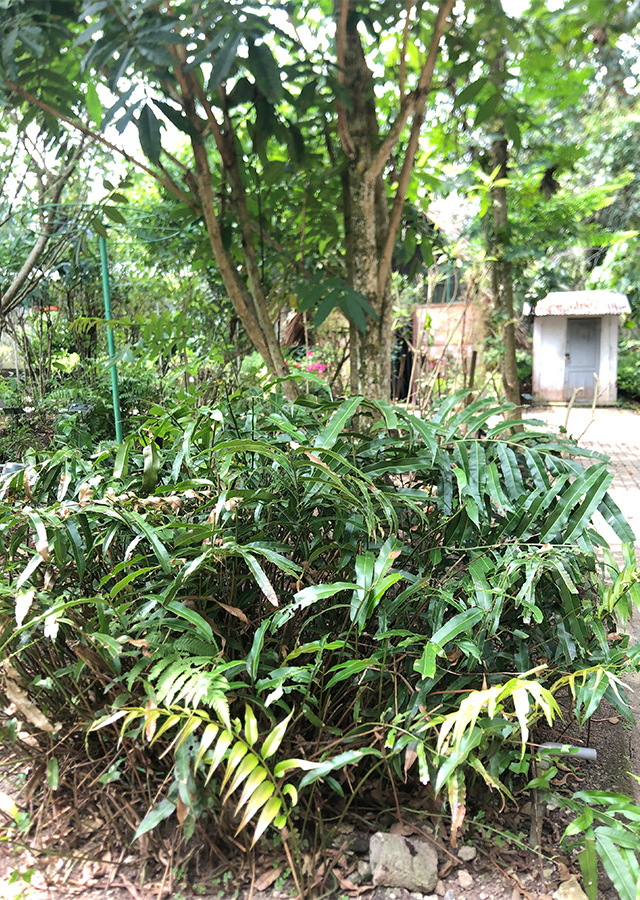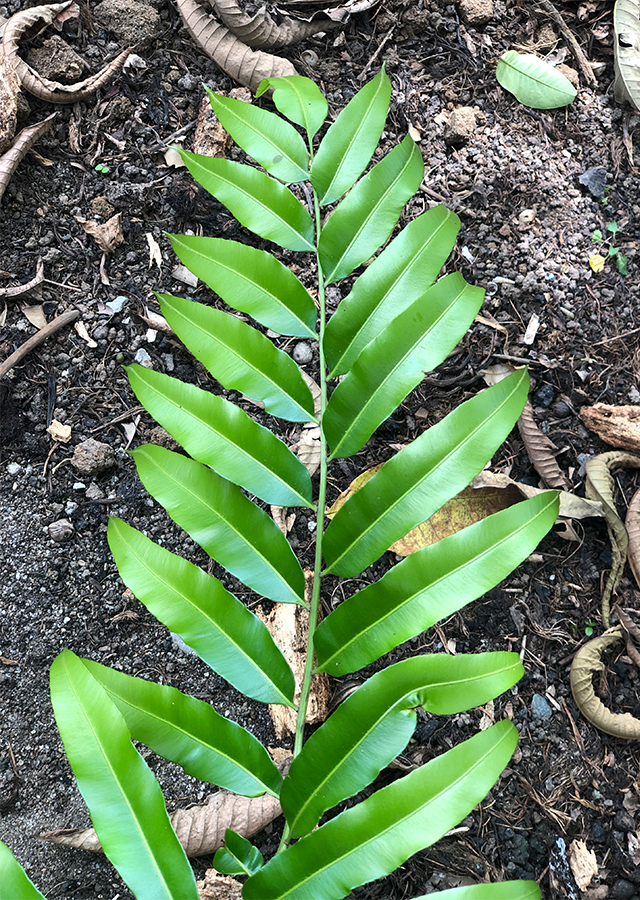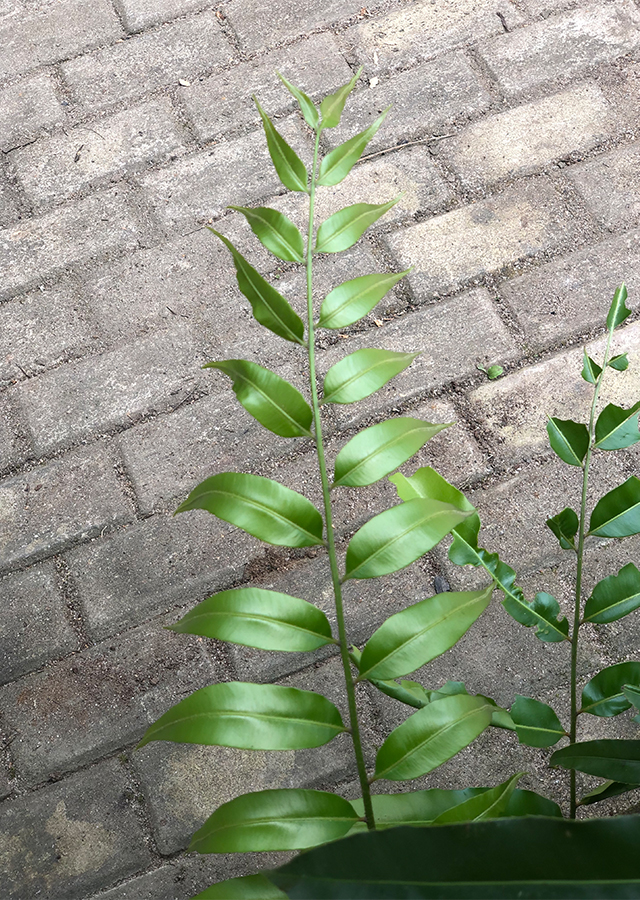Traditional Herbs from Stenochlaena palustris
cure_wounds
- Take fresh leaves of the shrimp fern plant as needed, wash them until clean.
- Crush them until they become a paste.
- Pulse on the injured area.
treat_acne
- Prepare the leaves and stems fresh shrimp fern plants\u00a0just wash thoroughly.
- Pound finely\u00a0until it becomes a paste.
- Apply on the skin\u00a0that acne.
What is Stenochlaena palustris Looks like??



Parts of Stenochlaena palustris that could be used
- Leaves", "Young Leaf Shoots
Stenochlaena palustris Distribution
Stenochlaena palustris is spread from India, throughout Southeast Asia to Australia and Polynesia. The plant is not cultivated commercially, but is only grown locally on a small scale, usually in hedgerows. In Southeast Asia, the pink, crunchy leaves are enjoyed as a vegetable, and cooked after wilting. It tastes similar to spinach. In Java, Indonesia, the leaves are highly valued as lalab (vegetable salad) which is served with chili sauce and rice. S. palustris is also often planted as an ornamental plant and its black rhizome is sometimes used as a wig to increase thin hair. In general, rhizomes are used as a source of fiber, a substitute for rattan, for tying fish traps, making baskets, ropes and belts. Apart from that, it is believed by the public to have various uses as a medicinal plant. In Sumatra, this vegetable is eaten as a laxativeAgroecology of Stenochlaena palustris
Stenochlaena palustris is usually found in slightly wet soil in freshwater swamp forests, behind mangrove forests, along rivers, swamps, in floating vegetation, lowland rainforests, also found in drier places and free from flooding from the surface sea ??to a height of 300 m above sea level, and 900 m above sea level in Java. In Thailand and Papua New Guinea, this plant is found in lowlands and low hills up to an altitude of 300-400 m above sea level. Generally, this plant is an epiphytic plant that propagates and climbs high in areas that are regularly flooded with water, where the lower part of the rhizome is often submerged. Tolerant of full sun, but prefers partial shade. In warm climates, this plant will grow easily, as long as there is enough light and humidity.
Morphology of Stenochlaena palustris
- The rhizome\u00a0is green, spreads long, dark. Has dark brown to black, circular, oval-lanceolate scales, small, grows most prominently at the tip, covering the tip completely. Can be attached to the tree trunk using adhesive roots." ,"The stem\u00a0is brown, smooth, less than 1 cm in diameter and slightly branched.\u00a0
- The leaves (fronds) are compound pinnate, red on young leaves, while mature leaves are bright green to dark green, shiny, glabrous although young plants may have some scales and short, pale hairs all over their bodies. There are\u00a0two types of fronds, sterile fronds and fertile fronds , lance-shaped to broad lance with toothed edges, while the fertile frond is very narrow, tends to droop, measuring about 20 cm long, 0.3 cm wide with smooth edges up to 80 cm, has 8-15 pairs of leaflets and 1 terminal leaflet.\u00a0
- Sori is long and linear, found on each side of the midrib almost covering the entire width of the leaflets. Tends to be produced only in the upper part of the plant from the fertile frond.\u00a0Spores are bilateral, colorless, translucent, papillose-verrucose.
Cultivation of Stenochlaena palustris
Plant propagation is by spores, but it is easier by rhizome cuttings.
Stenochlaena palustris, more details :
Chemical Content of Stenochlaena palustrisFive flavonol glycosides (stenopalustroside A-E), kaempferol 3-O-(3‘ ‘-O-E-p-coumaroyl)�'(6‘ ‘-O-E-feruloyl)-β-d-glucopyranoside (6), kaempferol 3-O-(3‘,6‘ ‘-di-O-E-p-coumaroyl)-β-d-glucopyranoside, kaempferol 3-O-(3‘ ‘-O-E-p-coumaroyl)-β-d-glucopyranoside, kaempferol 3-O-(6‘ ‘-O-E-p-coumaroyl)-β-d-glucopyranoside, kaempferol 3-O-β-d-glucopyranoside,� alkaloids, flavonoids, glycosylglucose, lipid derivatives, saponins, steroids and terpenoids.
Benefits of Stenochlaena palustris
Reduces fever, treats skin diseases, acne, boils, stomach ache, testicular trophies, heals wounds, infections and diabetes, laxative and contraceptive.
Simplisia of Stenochlaena palustris
Another Facts for Stenochlaena palustris :
Synonym of Stenochlaena palustrisLomaria scandens� Willd., Polypodium palustre� Burm.f., Acrostichum palustre� (Burm.f.) C.B.Clarke
Habitus of Stenochlaena palustris
Fern. Ferns, epiphytes, grow vines and climb up to 10 m.�
Habitat of Stenochlaena palustris
- Wetland
- Riverside
- Forest
- Land
No comments:
Post a Comment